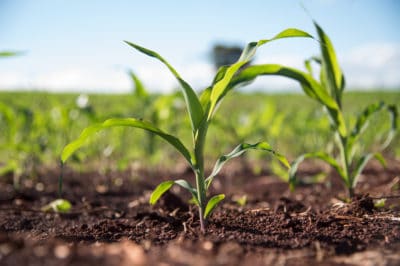Planting Corn in Spring
If you are planting corn seeds to feed your livestock or to grind the corn into meal or flour, you will likely plant your seeds in mid-April. Although the soil temperature is not warm enough to plant any other crops, the cold spring weather is ideal for getting a head start on your corn. While corn planted in cold weather takes longer to germinate, farming it early frees you up to attend to other spring activities.
The kind of corn used for feed and flour is commonly referred to as field corn. This type of corn takes longer to mature than other varieties, so planting early also provides a long enough growing season for the corn to develop.
Early Summer Planting
If you want to grow sweet corn to eat fresh or put up for later consumption, you should plant your seeds in the early summer months. Corn prefers warm soil and air temperatures and will germinate more quickly if the ground is at least 60°F (16°C ). Some super sweet corn varieties mature in as little as 60 days, so if you plant corn in June, you will get a good crop by August.
Some of the most common early-ripening corn varieties include:
- Earlivee, which you can pick 60 days after planting.
- Quickie, bi-color corn that ripens in about 65 days.
- Sugar Pearl, which is ready to eat approximately 70 days after planting.
Mid-Season Planting
Since there are many different varieties of sweet corn to choose from, you can also plant two different kinds of corn in your garden. For example, you can plant a longer-maturing variety in one area of your garden, and plant a different type with a shorter growing season in another.
Tip: If you are planting more than one variety of corn, do not plant them close together. The plants will cross-pollinate, and you may not have any edibles ears!
You can also stagger your planting, which means to plant a few rows of corn on one date, and plant another few rows two weeks later. Staggering the seeding in this way ensures you have an abundant crop all through the summer months as well as plenty of corn to preserve for the winter.
Regardless of when you plant, as long you make sure the corn you choose will mature in time to eat you should have plenty of fresh ears to enjoy!
